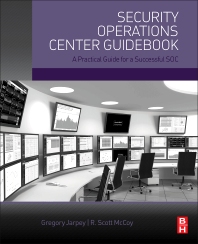Security Ambassadors Welcome, Watch in the Comcast Center




Hi there, how are you doing today?”
How much information do you get with that one question? In Philadelphia, the message is clear – “I see you; I see where you came in; I see what you’re doing here; I recognize your patterns. Welcome to the Comcast Center.”
When you step foot in the largest skyscraper in Philadelphia, the first thing you notice might be the world’s largest 4mm video display, covering a full 27 by 87 feet, with the awestruck masses of tourists staring at the dancing figures on the wall. But the well-dressed personnel behind the counter notice you, and before you know it, you’ve been greeted with a smile, handed your appropriate visitor’s pass and sent up to the reception floor.
But don’t be mistaken, these aren’t secretaries. They aren’t guards. These are AlliedBarton Security Ambassadors.
A Five-Star Office
When the Comcast Center was being built in 2005, Jim Birch and Mark Farrell shared a vision of a different kind of office space – a Philadelphia landmark that was just as much a tourist destination as a place of business. To achieve that goal, they wanted to design security that made the building feel like a five-star hotel.
However, with such a high-profile building as the Comcast Center, keeping security officers in the highly traveled, open-24/7 lobby was imperative. So, in order to find officers who could be both security-minded and conscious of customer service, Birch and Farrell partnered with AlliedBarton to scout out the best candidates in some unconventional places.
“If you think of five-star hotels, it’s the concierge – the meet-and-greet, proactive, positive engagement – that sets those hotels apart,” says Birch, Director of Security and Life Safety at the Comcast Center for Liberty Property Trust, the building’s owner. “We said ‘Okay, we can teach anyone security, but we can’t teach them to be positive, happy people.’ So we decided to recruit in nontraditional locations.”
Candidates were found at schools of hospitality and concierge associations, under the notion that people in those fields would already have the predisposition for pleasant customer interaction.
Each recruit was given a psychological evaluation to test his or her aptitude for customer service. Upon passing, they were hired and given at least 80 hours of training, 90 percent of which was on customer service.
“We brought in consultants from Disney, Four Seasons and the Ritz-Carlton to talk about the positive vibes when you go up to a guest and welcome them before they come up to you,” Birch explains.
Once the recruits had passed all of their training courses, they were sent to high-end clothing stores in Philadelphia to be outfitted in tailored, professional suits so they could match even the executives who walk into the building.
At that point, they can call themselves AlliedBarton Security Ambassadors.
Building from the Lobby Up
“The security components are really two-fold – one is technology; one is people,” says Birch. “So it’s basically Liberty Property, the owner and property management for the building, and Comcast, the anchor tenant for the building, getting together – first deciding where our risks are in the building, and then what is the best way to address each risk, whether that be technology, i.e. cameras, access control, should it be a person, i.e. a security ambassador, or should it be a combination of both. So starting with that premise, we just went risk-by-risk and made a decision at each point.”
In many tenant-landlord partnerships, there can be some redundancies in security coverage. There could be lobby security that handles visitors quite differently than the tenant’s security protocol requests, or perhaps gaps in access control credentials leave guests stranded on the wrong floor. All of this adds to the cost of security, as more officers might be repeating tasks on different floors, or running back to fix another officer’s mistakes, when a single security ambassador team could coordinate the process and complete the task more efficiently.
“The main job of Liberty Property Trust is to ensure the integrity of our tenants’ space, to ensure that no one enters a tenant’s space unless the tenant has authorized that person to enter, to ensure that the property is protected, and to ensure that the public components of the space are a positive experience for tenants, visitors and tourists who come here,” Birch says.
“Then from the Comcast perspective, we wanted complete alignment from base building security to ensure there were no dual or competing roles,” says Farrell, Chief Security Officer for Comcast. “We wanted one seamless system where everyone was working together and communicating. We’ve all been in too many buildings where you have two or three different security forces. Sometimes they don’t all work together, and it doesn’t all come together for a full and complete program, which is what we wanted here.
“Jim’s staff primarily is at the lobby desk and my staff is primarily on certain executive floors and event areas, we wanted them to be interchangeable,” Farrell adds. “This way everyone knows the organization and the flow of the building.
“We’re both hiring out of that same pool of preselected, pre-screened individuals with a very, very low turnover rate,” he says. “The security ambassadors love their job and love to come to work. So we don’t have to spend a lot of time training new people. We have well-trained people that have been here for a long time, and they’re dependable.”
The low turnover rate also leads to a clear jump in ROI compared to the typical hourly security officer. When security ambassadors do leave their jobs at the Comcast Center, “they leave for other good opportunities,” Farrell says.
Less start-up cost of on-boarding new personnel, less on-site training, cross-utilization of ambassadors for any location anytime, site familiarity, response to alarms and issues, recognition of who belongs – these all increase ROI just by having content, long-term security personnel, he explains.
The Broken Window Theory
Overall, the ambassadors don’t have a lot of high-stress problems to manage; they focus on quality-of-life issues that could interfere with a positive tenant or visitor experience.
“A few examples would be reckless skateboarding that could cause property damage or knock down a pedestrian, graffiti, demonstrations or leafleting in areas that would interfere with our tenants or visitors,” Birch says. “Basically it’s the same broken window theory that the cops use – if you can take care of the low-hanging fruit, people feel much more confident.”
Through Liberty Property Trust, the Comcast Center is outfitted with a closed-circuit surveillance system, access cards with limited authority and an online, real-time registration program for visitor management, all of which help to reduce the “low-hanging fruit” that can lend an air of discomfort to a building.
If you’re expecting a guest, you simply send a form through the visitor management system. From there, the security ambassador at the front desk can look up the guest, verify his or her identity against an ID, take the guest’s photo and issue a temporary guest pass. That pass, which expires at 6 p.m., will get the guests past the lobby turnstiles and up to a reception floor. From there, the person they are visiting would come down and escort them to their destination.
The ambassadors themselves are outfitted with phones, radios and camera views behind the desk, but supervisors are also given smartphones with surveillance apps from AMAG to help them keep tabs on situations while on the move.
The ambassadors might not have to deal with many high-stakes challenges, but it tends to be the little things that set these AlliedBarton Ambassadors apart from other forms of security. When a protest is being staged outside, a well-dressed officer is placed at every door, calmly alerting tenants and visitors to the situation and directing them to the appropriate door to control access. Visitors don’t doubt this ambassador’s credentials or authority, but they happily answer back when greeted, embracing the five-star concierge experience while following subtle security protocols.
“We wanted something that was nontraditional, out-of-the-box, new and fresh,” Farrell says.
“There are still many companies out there that see customer service and security as completely different fields,” Birch adds. “I think, though, that we’re demonstrating here on a daily basis that they are absolutely one and the same. They not only complement each other, but they are essential to have as a combined goal to have a good security program.”
Looking for a reprint of this article?
From high-res PDFs to custom plaques, order your copy today!










